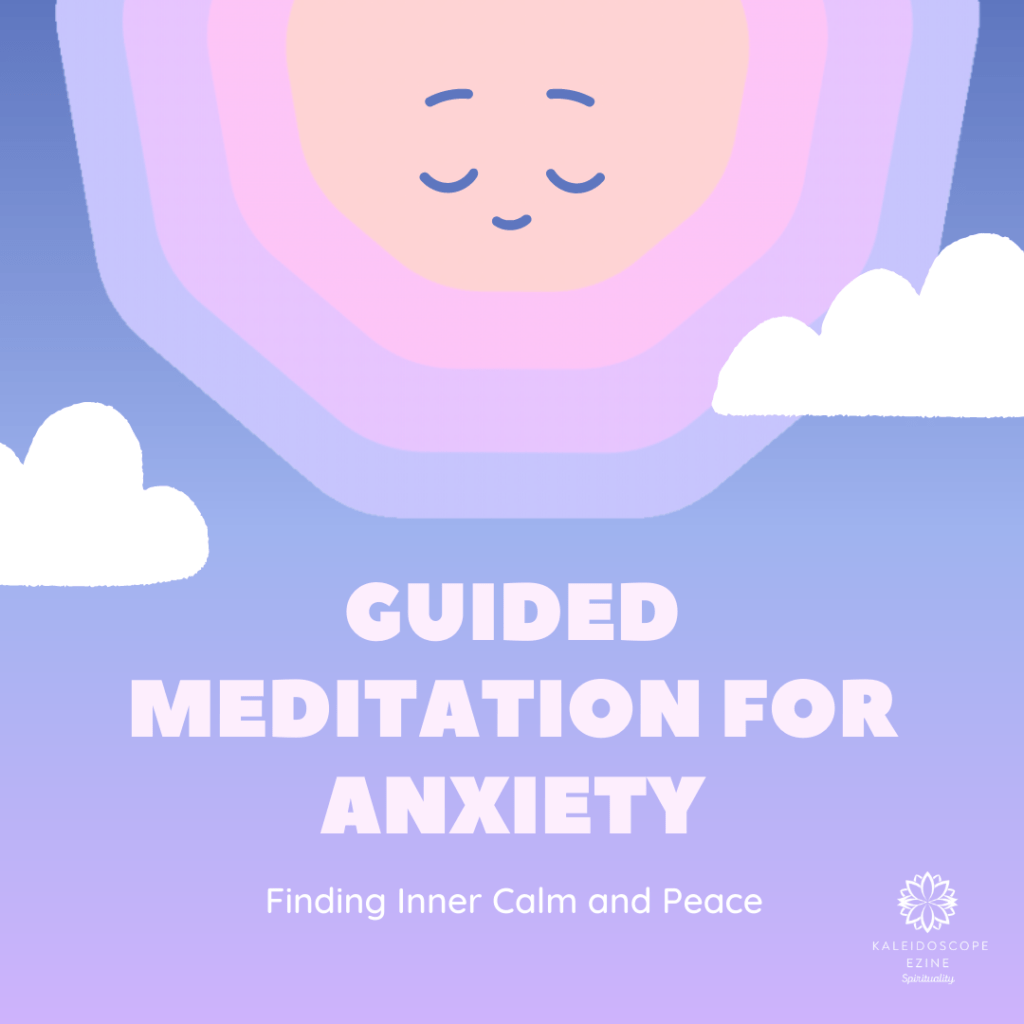Living in today’s fast-paced world can often leave us feeling overwhelmed and anxious. The constant pressures of work, relationships, and personal expectations can take a toll on our mental well-being. However, there is a powerful tool that can help alleviate anxiety and bring about a sense of calm and peace: guided meditation for anxiety.
Understanding Anxiety
What is Anxiety?
Anxiety is a natural response to stress or danger. It’s our body’s way of preparing us for a perceived threat. However, when anxiety becomes excessive or prolonged, it can interfere with our daily lives and overall well-being. Symptoms of anxiety may include racing thoughts, restlessness, increased heart rate, and difficulty concentrating.
The Impact of Anxiety
Anxiety can have a significant impact on our mental, emotional, and physical health. It can disrupt our sleep patterns, affect our relationships, and hinder our ability to perform well at work or school. Moreover, chronic anxiety can contribute to the development of other health issues, such as high blood pressure and weakened immune function.
The Benefits of Guided Meditation for Anxiety
What is Guided Meditation?
Guided meditation for anxiety is a practice where an experienced meditation instructor or recorded audio guides you through a meditation session. It provides a structured approach to meditation, making it easier for beginners to engage in the practice. The guided instructions help to calm the mind, relax the body, and foster a sense of inner peace.
Reducing Anxiety with Guided Meditation
Guided meditation for anxiety can be an effective tool for managing and reducing anxiety. By focusing on the present moment and directing our attention inward, we can break free from anxious thoughts and worries. The guided instructions help us cultivate a state of relaxation, allowing the body’s stress response to diminish. Regular practice of guided meditation for anxiety can rewire the brain, reducing the reactivity of the amygdala, which is responsible for triggering anxiety responses.
Getting Started with Guided Meditation for Anxiety

Finding the Right Meditation Guide
When starting with guided meditation for anxiety, it’s essential to find a meditation guide whose voice and style resonate with you. There are numerous guided meditation resources available, such as apps, online platforms, and even YouTube channels. Take some time to explore different options and choose a guide who makes you feel comfortable and at ease.
Creating a Calming Environment
To fully immerse yourself in the guided meditation for anxiety experience, it’s crucial to create a calm and soothing environment. Find a quiet space where you won’t be disturbed, dim the lights, and eliminate any distractions. You may want to enhance the ambiance by using essential oils, candles, or soft music. The goal is to create an atmosphere that promotes relaxation and tranquility.
Setting Realistic Expectations
When starting your guided meditation for anxiety journey, it’s important to set realistic expectations. Meditation is a skill that requires practice and patience. Don’t expect immediate results or complete silence of the mind. Instead, approach each session with an open mind and a willingness to learn. Over time, with regular practice, you’ll notice the positive effects of guided meditation for anxiety on your anxiety levels.
Guided Meditation Techniques for Anxiety Relief
Deep Breathing
Deep breathing is a fundamental technique in guided meditation for anxiety relief. Start by sitting or lying down in a comfortable position. Close your eyes and take a deep breath through your nose, counting to four. Hold your breath for a moment, then exhale slowly through your mouth, counting to six. Repeat this pattern several times, focusing on the sensation of your breath entering and leaving your body. Deep breathing activates the body’s relaxation response, helping to calm anxiety.
Body Scan
The body scan technique involves systematically directing your attention to different parts of your body. Start by focusing on your toes and slowly work your way up to the top of your head, paying attention to any sensations or areas of tension. As you become more aware of your body, you can consciously release any tension you may be holding. This technique promotes relaxation and helps to ground you in the present moment.
Visualization
Visualization is a powerful technique that utilizes the mind’s eye to create calming and peaceful images. During guided meditation for anxiety, the instructor may guide you to imagine a serene natural setting or a place where you feel safe and content. By vividly visualizing these scenes, you engage your senses and evoke a sense of relaxation and tranquility, helping to alleviate anxiety.
Grounding
Grounding is a powerful way to come back to the present moment and feel stable here and now. It is a way to just be in this moment and very effective because anxiety is when the mind is either in the past or the future but not in the NOW. Grounding can be done in many ways. One of the ways is to become like a tree with roots in the earth. Here is a link to the meditation that can help you with this.
Incorporating Guided Meditation for Anxiety into Your Routine
Consistency is Key
To reap the benefits of guided meditation for anxiety, consistency is key. Aim to incorporate guided meditation into your daily routine, even if it’s just for a few minutes. Consistency helps to reinforce the positive effects of meditation and trains your mind to relax and let go of anxious thoughts more easily.
Experiment and Explore
While guided meditation for anxiety is a powerful tool for anxiety relief, it’s important to explore other forms of self-care as well. Experiment with different techniques and find what works best for you. Combining guided meditation for anxiety with practices like exercise, journaling, or spending time in nature can create a holistic approach to managing anxiety.
Conclusion
Guided meditation for anxiety is a valuable resource for anyone seeking relief from anxiety. By incorporating this practice into your daily routine, you can cultivate inner calm and peace, reducing the impact of anxiety on your life. Remember, it takes time and practice to fully harness the benefits of guided meditation for anxiety, so be patient with yourself. With commitment and dedication, you can find solace and tranquility within, even in the midst of life’s challenges.


